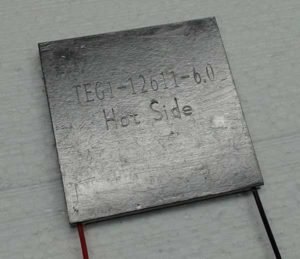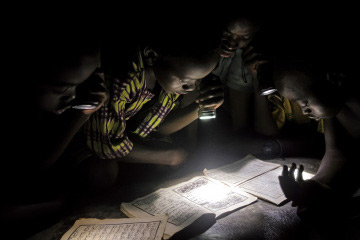Tag: electricity
The Technology Behind The Micro Power Station
In the mid 19th century, a gentleman by the name of Jean Charles Athanase Peltier invented a form of electrical production.
The TEG or thermoelectric generator, produced in different sizes, is often used in Space technology, powering satellites etc. Some plates are only 3mm thick and 50x50mm in diameter and these tiny devices, subjected to heat on one side and cold on the other can produce a small amount of electricity. These tiny plates are made up of dissimilar metals.
When subjected to heat and cold they produce an electrical current. We liken this to a thunder storm. When a hot cloud meets a cold cloud a bolt of lightening erupts (electricity).
The plates can be connected together in order to produce more electricity. The bigger the temperature difference the more powerful the TEG becomes.
The difference in the two temperatures is known as the delta T. For instance, if the hot side is one hundred degrees centigrade and the cold side is ten degrees centigrade then the delta T is 90c. The greater the delta T, the more electricity is produced.
Being able to control and balance the two temperatures on a plate only 3mm thick is the secret of success.
The cold side, if too cold, stops the heat from striking the plate. In the same way, if the plate is too hot it can stop the cold side striking. This is where technology kicks in.
Electronics help to balance the two temperatures. Xtralec have developed a circuit board capable of controlling both the hot and the cold sides of the TEG, when placed into a wood or multi fuel stove.
Once installed inside a multi-fuel stove, these generators are capable of producing a considerable amount of electricity.
More Than 1 Billion Live Without Electric Light!
What did you do when the sun went down? If you’re reading this, chances are you switched on a light. But for the 1.3 billion people around the world who lack access to electricity, darkness is a reality. There is no electric light for children to do their homework by, no power to run refrigerators that keep perishables or needed medicine cold, no power for cooking stoves or microwaves. What light they have mostly comes from the same sources that humans have relied on forever–firewood, charcoal or dung–and the resulting smoke turns into indoor pollution that contributes to more than 3.5 million deaths a year. “For us, life does not stop after dark,” says Michael Elliott, president and CEO of the development nonprofit ONE. “For 550 million people in sub-Saharan Africa and many more than that around the rest of the world, it does.”
Two Thirds Of Africa Live Without Light!
Right at this very moment 621m Africans – two-thirds of the continent’s population – live without electricity. And the numbers are rising. A kettle boiled twice a day in the United Kingdom uses five times as much electricity as someone in Mali uses in a year. Nigeria is one of the world’s biggest oil exporters but 93m Nigerians depend on firewood and charcoal for heat and light. On current trends, there is no chance that Africa will hit the global target of energy for all by 2030.
Unlike droughts, health epidemics and illiteracy, Africa’s energy crisis seldom makes the headlines. Yet the social, economic and human costs are devastating. Inadequate and unreliable electricity undermines investment. Power shortages cut economic growth by 2-4 per cent annually. The toxic fumes released by burning firewood and dung kill 600,000 people a year – half of them children. Health clinics are unable to refrigerate life-saving vaccines and children are denied the light they need to study.


